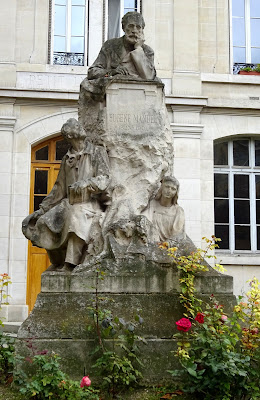Une vie de boy (1956) by Ferdinand Oyono (1929–2010) is the first part of a trilogy (also including Le Vieux Nègre et la médaille (1956) and Chemin d'Europe (1960), the only three novels that Oyono ever wrote, all a time leading up to the independence of Cameroon (Republic of Cameroon).
This novel toggles between the two aspects of Cameroon, the soon-to-be 'free' country and the colony at the time. Toundi is a representation of the split between the two countries, and the novel is very much his notes on what happens. He has a violent father he flees from, and from then is 'adopted' by Father Gilbert, who names him Joseph and teaches him the French language.
On the death of Father Gilbert Joseph becomes the 'boy' (servant) of a white colonial 'master', whose wife is (as is the norm) unfaithful to her husband and Toundi has to act as go-between. Until, that is, he is accused of a crime of which he is innocent, and, well... I can understand why Oyono is an important Cameroon writer.
This novel toggles between the two aspects of Cameroon, the soon-to-be 'free' country and the colony at the time. Toundi is a representation of the split between the two countries, and the novel is very much his notes on what happens. He has a violent father he flees from, and from then is 'adopted' by Father Gilbert, who names him Joseph and teaches him the French language.
On the death of Father Gilbert Joseph becomes the 'boy' (servant) of a white colonial 'master', whose wife is (as is the norm) unfaithful to her husband and Toundi has to act as go-between. Until, that is, he is accused of a crime of which he is innocent, and, well... I can understand why Oyono is an important Cameroon writer.
































